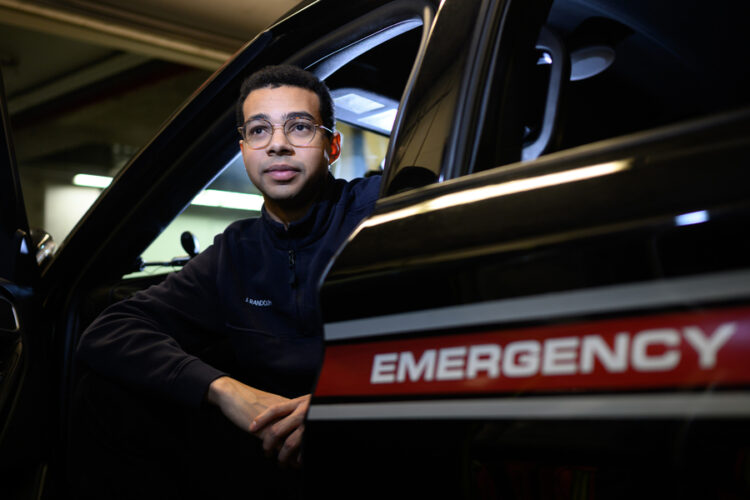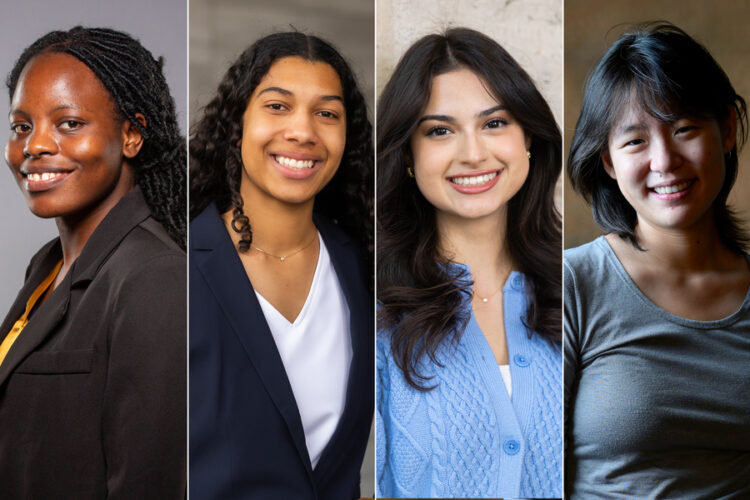Stretching Minds and Bodies: MIT Students Learn Why Exercise is Medicine
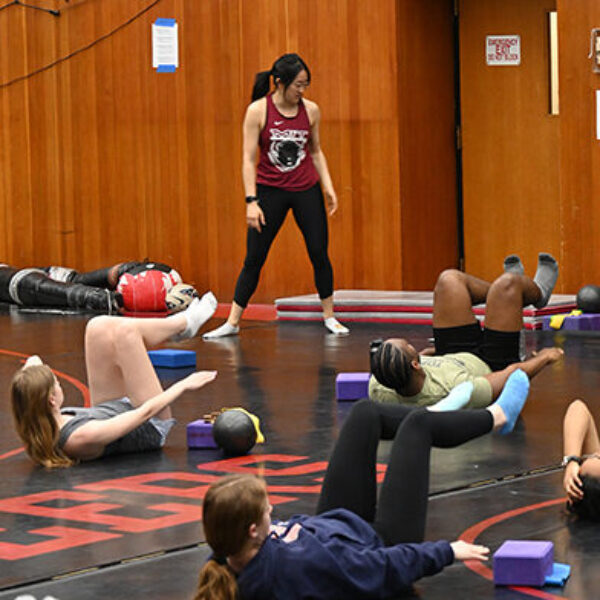
Exercise is Medicine class integrates physical activity and academics
We’ve known since ancient times that physical activity can prevent and treat a broad range of mental and physical illnesses. Even today, exercise is not a central focus of modern healthcare systems. But why? This is the motivating question behind MIT’s Exercise is Medicine: From Ancient Civilizations to Modern Healthcare Systems (STS.041/PE&W.0537) class – a collaboration between the MIT Program on Science, Technology, and Society (STS) and the Department of Athletics, Physical Education, and Recreation (DAPER).
Going beyond the MIT tradition of hands-on learning, Exercise is Medicine (EIM) offers full-body experiential education, combining readings, lectures, and physical activity at the Zesiger Center and on MIT’s playing fields. Students investigate topics including barriers to exercise, loneliness as a public health issue, and social determinants of health through partner acrobatics, Broomball, and sailing. During midterm week, they reflect on the mental health impact of activities, including meditation and pickleball. They also learn about the principles of traditional Chinese medicine through Qigong.
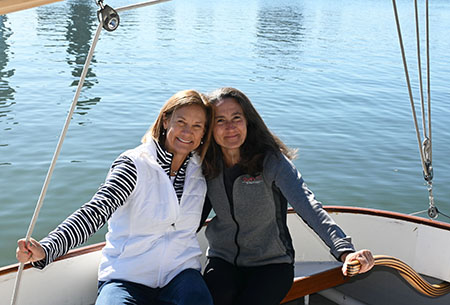
Co-taught by Professors Jennifer Light and Carrie Moore, in addition to other DAPER instructors, EIM was first offered in the spring of 2024 for 20 undergraduates. Students from every major are invited to enroll—the next offering filled quickly, doubling in size to 40 students, with a long waitlist.
Exercise is Medicine is one of three courses Light and Moore offer as part of the MIT Project on Embodied Education, launched in 2022. Professor Light was eager to create an academic class where students spent at least 50 percent of their learning time out of their seats doing a physical activity that reinforced the academic objectives she was presenting.
“I was developing a new research project on the ancient wisdom and modern science of movement and learning, and was looking to develop courses that put this method into practice. Through Anthony Grant, athletic director and head of the DAPER, I connected with Carrie. We are having so much fun collaborating; one course quickly became two and now three,” says Light.
History of medicine and health systems courses have long been a staple of the STS program. In EIM, students visit with MIT Chief Health Officer Dr. Cecelia Stuopis, who offers insight into the place of exercise in healthcare throughout the history of the Institute. Discussions also include the economic factors that may impact ideas and innovations from STEM fields.
The partnership with DAPER helps students deepen their understanding of the readings and lectures and Light hopes, sets them up to find ways to integrate movement into their lives after the semester’s end. Moore adds, “This course allows students to reflect on the impact of movement on their cognition – experiencing increases in motivation, mood, focus, and community as well as improved retention of content by engaging more parts of the brain.”
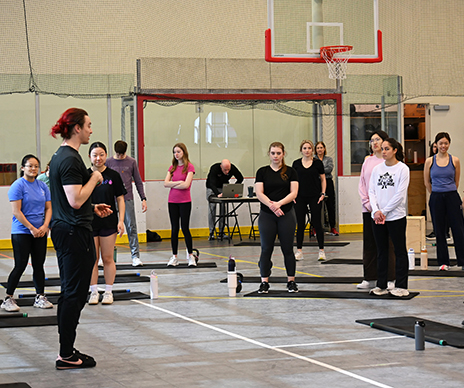
“DAPER instructors have an amazing ability to make so many physical activities accessible at the beginner level, and students come away from the course appreciating new activities they can do while on campus or as they move into the real world,” says Light.
“Nathan Kim, a senior in Course 15, says, “When I think of my MIT education, I mostly think about problem sets and studying for exams. Learning is initially thought of as a cognitive output and performance. Even in project-based classes, there’s little attention to the body’s role in comprehension.”
“However, this course broke that mold. Instead of treating the body as separate from the mind, it treated it as an essential partner in learning.” Nathan Kim, MIT senior.
“I love that this class stretches students’ minds and bodies at the same time. They get to learn serious academic content, try all sorts of new physical activities, and do so in a context that aims to make what they’re learning personally relevant to the remainder of their time in college and life beyond. The idea that their bodies aren’t just there to transport their heads around campus—but can be resources for academic learning—is a revelation to pretty much everyone in the class,” says Light.
Emily Zhou, a senior in Course 6-3, adds, “After reading about the role of team sports in reducing loneliness and improving mental health, I didn’t expect the connection to feel so immediate. But the moment I was slipping and falling on the ice [while playing broomball] with my teammates, some of whom I had never met before, it clicked for me. As we coordinated strategies and cheered together every time we made a goal, I gained a deeper understanding of the reading, and why collective physical activity builds meaningful connections. I could genuinely feel how community forms differently when I’m trusting people with my physical body.”
“It’s a unique and enriching experience for the students to have experiential learning be a component of the class. Not only does it create shared memories of something special that we hope they will have for a lifetime, but it’s also a lot of fun. It frees their minds from to-do lists and other tasks and it gives them extra energy throughout the day. Their brains may be tired at the end of the day, but not their bodies,” says Moore.
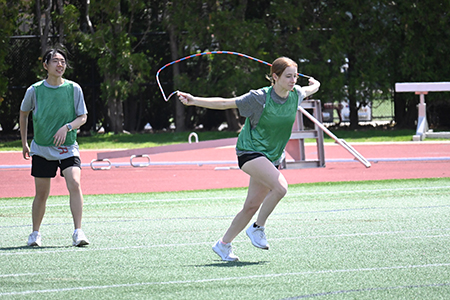
The class also fulfills MIT’s General Institute Requirements. Students who successfully complete the class earn HASS credit and two Physical Education and Wellness points. Exercise in Medicine will not be offered fall 2025, but two other classes with an instructional physical education component will be: Embodied Education: Past, Present, Future, (STS.014) and Thinking on Your Feet: Dance as a Learning Science, (STS.024) in the spring of 2026.
Earlier this year, Light and Moore presented findings from their ongoing class collaborations at the National Association for Kinesiology in Higher Education conference. The pair showcased how they connected the academic side of MIT with the activity side of campus, with the hopes of inspiring others to follow in a similar direction. They’re also working to help other MIT instructors bridge the two sides of Mass Ave.
“Professor Light and I have created a synergy of what education could be. The model created works at MIT and is received well by our students, so we want to help faculty reshape the way they teach to enrich learning and the student experience. We hope that when our students become leaders in their careers, they will share the lessons they learned in our classes with their colleagues. If they do so, then we’ve done our job,” says Moore.
Have a question about this article?
Contact Sarah Foote from the Division of Student Life’s Communications Office at dsl-comm@mit.edu







